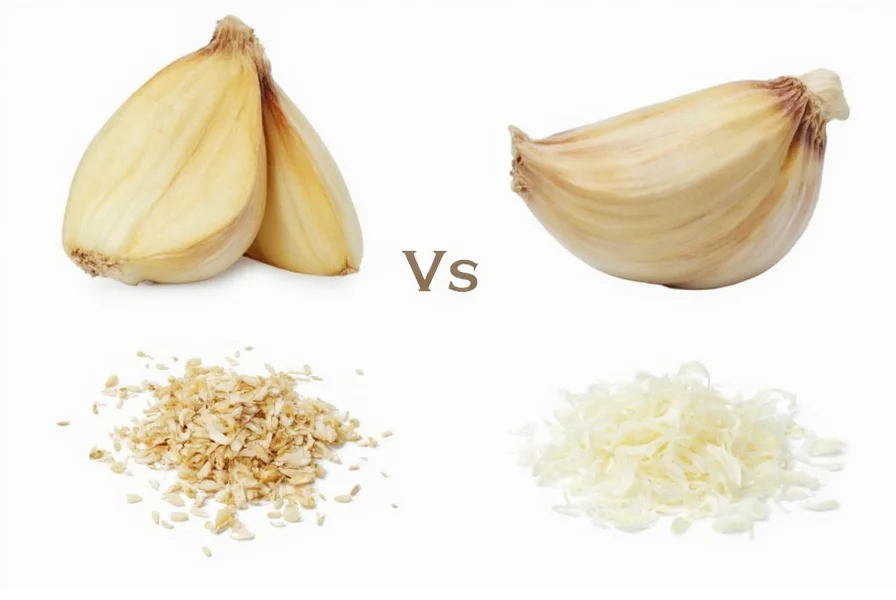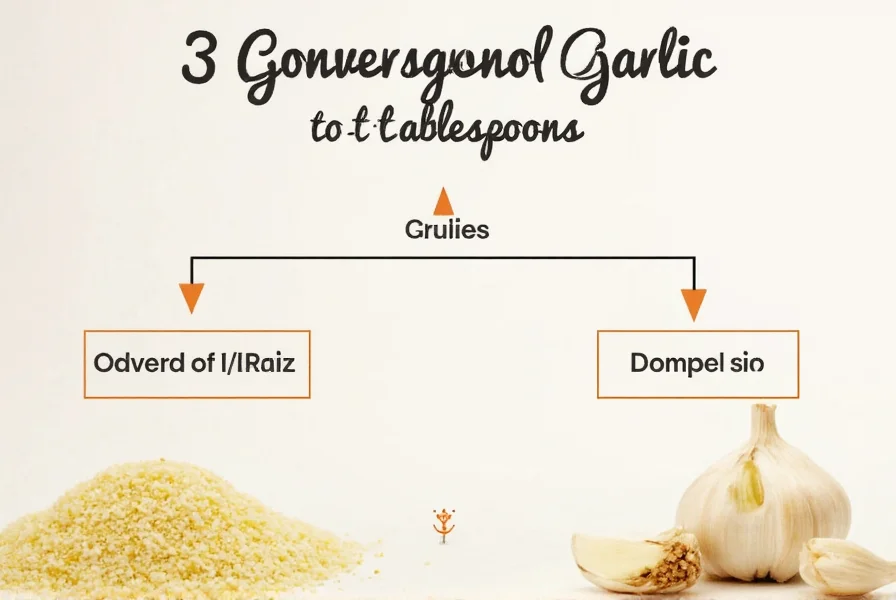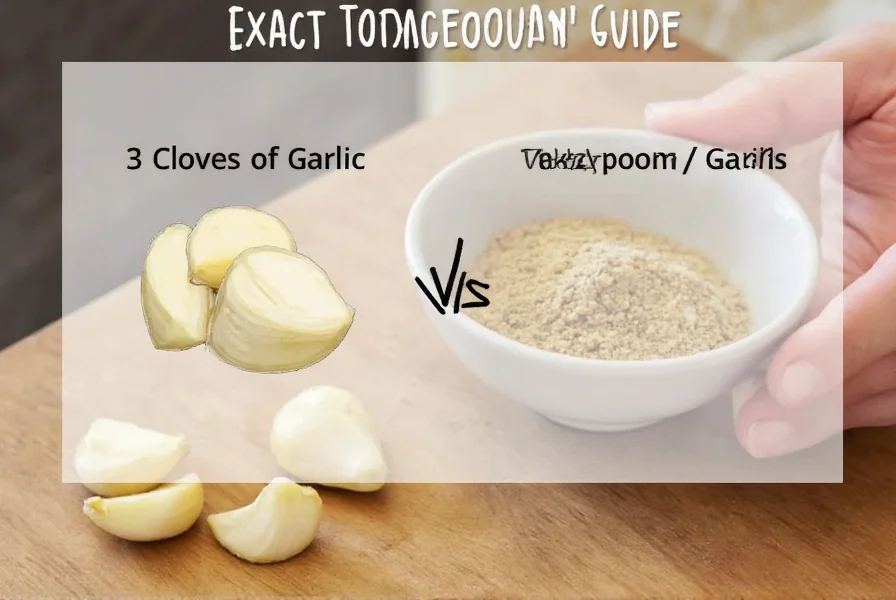Understanding garlic measurements is crucial for achieving the perfect flavor balance in your cooking. While the standard conversion for three medium garlic cloves equals about ½ tablespoon when minced, several factors influence this measurement that every home cook should know.
Factors Affecting Garlic Measurement Conversions
Garlic clove sizes vary significantly, which directly impacts tablespoon conversions. Grocery store garlic typically comes in three size categories:
- Small cloves (about 1” long): Yield approximately 1/4 teaspoon minced per clove
- Medium cloves (standard size): Yield roughly 1/2 teaspoon minced per clove
- Large/jumbo cloves (often from farmer's markets): Can yield up to 1 teaspoon minced per clove
The preparation method also affects volume. Whole cloves contain air pockets that disappear when minced, while roasted garlic compacts differently than raw. For the most accurate 3 cloves of garlic to tablespoon conversion, always consider your specific garlic variety and preparation technique.
| Number of Cloves | Minced Garlic (Teaspoons) | Minced Garlic (Tablespoons) | Garlic Powder Equivalent |
|---|---|---|---|
| 1 small clove | ¼ tsp | 1/12 tbsp | 1/8 tsp |
| 1 medium clove | ½ tsp | 1/6 tbsp | 1/4 tsp |
| 1 large clove | 1 tsp | 1/3 tbsp | 1/2 tsp |
| 3 medium cloves | 1½ tsp | ½ tbsp | 3/4 tsp |
| 3 large cloves | 3 tsp | 1 tbsp | 1½ tsp |
Practical Measurement Techniques for Home Cooks
When converting 3 garlic cloves to tablespoons in your kitchen, follow these professional techniques:
For the most accurate measurement of minced garlic, use the "spoon and level" method rather than packing the spoon. Gently spoon minced garlic into your measuring spoon without pressing down, then level with a straight edge. This prevents overpacking, which could double your garlic quantity.
If you're working with pre-minced garlic from a jar, remember that commercial products often contain preservatives that affect density. For precise garlic clove to tablespoon conversion, add 10-15% more jarred garlic than fresh to achieve equivalent flavor intensity.

When Precision Matters: Recipe Applications
Certain dishes require exact garlic measurements for optimal results. In delicate sauces like aioli or vinaigrettes, even a slight variation in your 3 cloves of garlic to tablespoon conversion can overpower other flavors. For these applications, use a kitchen scale: three medium cloves typically weigh 9-12 grams before mincing.
Conversely, in robust dishes like roasted vegetable medleys or tomato sauces, the exact measurement matters less. In these cases, focus on the aroma rather than precise volume—add garlic until the fragrance becomes pronounced but not overwhelming.
Storage and Freshness Impact on Measurements
Freshness significantly affects garlic density and, consequently, your tablespoon conversions. Newly harvested garlic contains more moisture, yielding slightly more volume when minced. Older garlic becomes drier and more compact, meaning three cloves might produce less minced garlic than expected.
For consistent garlic measurement equivalents in your cooking, store garlic in a cool, dark place with good air circulation. Avoid refrigeration, which causes sprouting and texture changes that affect measurement accuracy. Properly stored garlic maintains consistent density for more reliable conversions between cloves and tablespoons.

Substitution Guidance for Different Garlic Forms
Understanding equivalent measurements across garlic forms prevents recipe disasters. When substituting for three fresh cloves:
- Garlic powder: Use ¾ teaspoon (1 teaspoon creates noticeably different flavor profile)
- Garlic salt: Use 1½ teaspoons (remember to reduce other salt in recipe)
- Garlic paste: Use ½ tablespoon (check for added oils that affect measurement)
- Roasted garlic: Use 1 tablespoon (roasting concentrates flavor but reduces volume)
For international cooks working with metric measurements, three medium garlic cloves equal approximately 7.5 milliliters of minced garlic. This precise garlic measurement conversion proves invaluable when following recipes from different culinary traditions.
Professional Chef Tips for Garlic Measurement
Experienced chefs recommend these techniques for accurate garlic measurements:
- Always mince garlic uniformly for consistent volume
- Measure immediately after mincing before moisture evaporates
- For critical recipes, weigh garlic instead of measuring by volume
- When in doubt between measurements, start with less—you can always add more
- Consider your audience's garlic tolerance when converting measurements for shared recipes
Remember that garlic intensity varies by variety. Silverskin garlic packs more punch than Artichoke types, meaning your 3 cloves of garlic to tablespoon conversion might need flavor adjustment even with precise volume measurement.











 浙公网安备
33010002000092号
浙公网安备
33010002000092号 浙B2-20120091-4
浙B2-20120091-4